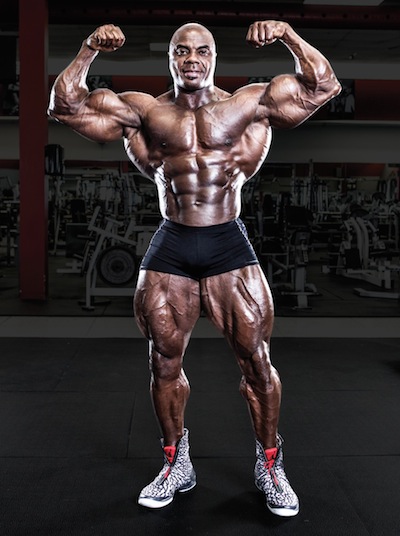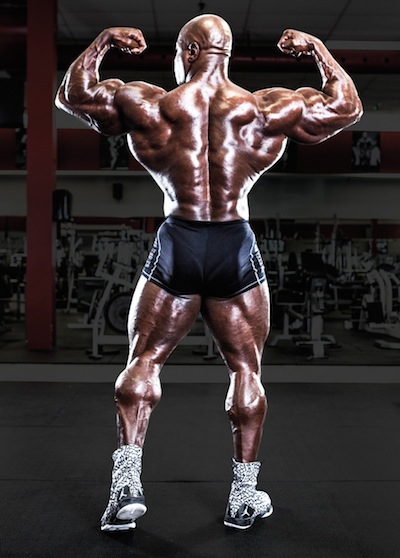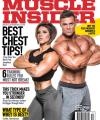Basic Muscle Function

MUSCLE FUNCTION:
What the various muscles and muscle groups are designed to do.
Bodybuilders break their workouts down into different training sessions for different body parts. But the idea of building a muscle is to have it do what it is designed to do, working through its range of motion against enough resistance to stimulate it to become bigger and stronger. (Editor's Note: For a more indepth look at how muscles work, this check out this post by Canada’s premier fitness expert John Cardillo.)
But go into any gym and you see individuals doing exercises in a way that shows they don’t understand the function of the muscle or muscles they are training. For example, you often see shrugs being done not just by lifting upwards with the traps but also with a circular motion of the shoulders at the top. But the shoulders have nothing to do with the traps, and the only resistance involved is vertical, not circular. So adding a circular movement to the lift is simply a waste of time and effort.
Bench presses are another example. What the pectoral muscles do is pull the shoulders together and to the front. Yet you commonly see bodybuilders benching with very heavy weight, bringing their shoulders forward to a point that is about even with the body (or slightly more) and then moving the weight further by an effort of the triceps, with no additional contraction of the pecs. A good triceps effort, for sure. But a very limited involvement of the chest muscles.
The list goes on: Cable rows performed with limited contraction of the shoulders to the rear but a lot of lower back effort. Dumbbell flyes done by dropping the weights way down and below the bench, long past the point where the pecs are already fully extended. Heavy barbell curls in which too much of the lift is done using momentum, the lower back, and the traps. Abdominal exercises that involve the hip flexors (e.g., leg raises and sit-ups) rather than the primary function of the abs, which is to pull the rib cage and pelvis together.
One way to avoid these kinds of mistakes is by paying attention to the basic functions of each of the muscle and muscle groups and to execute the exercises accordingly. Below is a list of many of the most important muscles you need to include in your workouts:
The Pectorals
The pectoral muscles originate at the shoulder and attach in a semicircle above the sternum at the center of the chest. The basic function of the chest muscles is to pull the shoulders forward and across the front of the body. For full range of motion, the pecs should crunch together at the top of the movement, and stretch out while the back contracts at the bottom.
The Deltoids
The deltoids is a complex, three-headed muscle group that lifts the arm above the head to the front, to the side, and to the rear. The flexibility of the shoulder joint and the cooperation of the three deltoid heads allow the arm to be rotated a full 360 degrees. Doing movements at various angles is often not that effective in various body parts. But the delts are designed to lift to the front, side, and back, so isolation trainng of each deltoid head can be very effective.
The Upper Back
Several major muscles are involved in the upper back, with the lats and the rhomboids being among the largest and most important. The upper back muscles pull the shoulders back and together in opposition to the pectoral muscles. The lats pull the shoulder girdle down as well as helping to pull it back.
The Middle Back
The middle back should be trained as a separate body part. To hit this area, you need to work a range of motion with isolation rowing movements that allow the shoulder blades to be drawn all the way back and crunch together. This usually involves rowing with much less resistance than you use for your major back exercises.
The Lower Back
The function of the lower back is to lift the torso upright and stabilize it. Exercises for this area include anything that uses a “bowing” movement, such as deadlifts, good mornings, and hyperextensions. Be aware that the lower back is the slowest area of the body to recover from intense workouts.

The Trapezius
The trapezius muscles pull or shrug the shoulder girdle upward, in opposition to the back. The movement to exercise the traps is performed straight up and down, with no circular motion.
The Biceps
The biceps is a two-headed muscle, originating under the deltoids and attaching to the front of the forearm, that curls the lower arm, cooperates with the deltoids in lifting the arm, and supinates (twist) the wrist and hand.
The Triceps
The triceps, a three-headed muscle located at the back of the upper arm and working in opposition to the biceps, extends or straightens the arm and pronates (twists) the wrist and hand.
The Forearms
The forearms are made up of various muscles that run on the outside (extensors) and inside of the lower arm (flexors). These muscles control the action of the hand and wrist.
The Abdominals
The abdominals originate at the bottom of the rib cage and attach to the pelvis. Their function is to stabilize the torso from the front, working as antagonists to the spinal erectors at the lower back, and to pull the rib cage and pelvis toward each other. The abs have nothing to do with raising the torso itself or lifting the legs.
The Obliques
The external obliques, which are located at either side of the torso, bend the upper body to either side and help to stabilize it to keep it upright.

The Quadriceps
The quadriceps is a four-headed muscle that is primarily designed to extend the leg. The four heads of this muscle work mostly as a single unit, so it isn’t possible to work individual heads specifically.
The Adductors
The adductor muscles are located in the internal femoral region (inside the upper leg), and their main function is to adduct or bring your legs towards the midline of the body.
The Hamstrings
The hamstrings or leg biceps is a two-headed muscle that curls the lower leg and works in opposition to the quads.
The Calf Muscles
There are two primary calf muscles. The gastrocnemius lies on top and attaches above the knee; the soleus lies underneath and attaches below the knee. The function of both is to extend and to some degree twist the foot. When the leg is straight, the gastrocnemius is most involved. Bending the knee causes the soleus to become the major muscle involved in calf movements.

